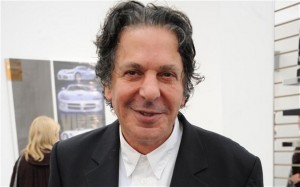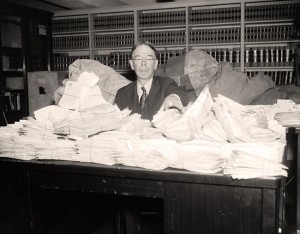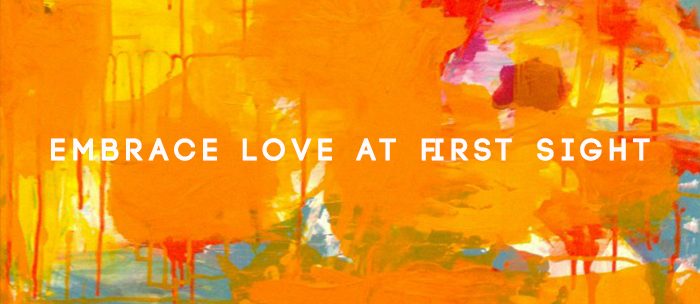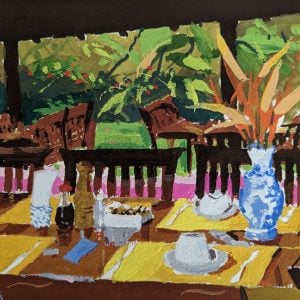Understanding art as an investment.
Let’s look at collecting contemporary art from an investment point of view. There is always going to be an element of risk involved. Whilst there are risks, there are many who have reaped the benefits of investing wisely.
There are two ways to view an art collection as an investment. Firstly, as a spiritual investment in knowledge, history and happiness. Secondly, as a monetary investment. The former is most important. Latter should not be expected, but there are methods which will help you buy pieces that won’t decline in value.
Take the time to understand how your art collection will sit alongside your other investments. Investing in art is not like investing in property or gold. The art world is very unregulated. It’s opacity is constantly changing. Think of it like this: the art world is similar to the fashion world. Trends are constantly changing and evolving. So what a piece of art is worth will go both up and down over time due to many factors.
Alan Bamberger of artbusiness.com explains; “What makes a great collector great is his or her ability to separate out specific works of art from the millions of pieces already in existence and assemble them in such a way as to increase or advance our understanding of that art in particular or of the evolution of art in general”. The monetary value of the art you buy may go up and down… but know that so long as you love it, it’s spiritual value will never depreciate.
Determine which pieces may be a good investment
Let’s take a moment to think about buying art, purely as a monetary investment. The word ‘investment’ makes me think of putting effort and money into an asset with the expectation of gaining capital over time. So applying this to art, it is buying a piece at a low price in the hopes that over time it will worth more. As previously mentioned, the art you will find in the big galleries generally sell for high prices already, having run their prices up from a very low base. So is buying this art a good investment? Maybe not, as much of the capital gains have already been realised. Instead you should be looking for same sort of talent that hasn’t yet hit the big time.
Jonathon Glancey a writer for ‘The Independent’ tells how Saatchi collects; “Saatchi is clearly a man who loves a keen deal (he bought 10 out of 13 artworks shown by Anthony Wilkinson, an unknown young British artist fresh out of college for a bargain pounds 4,000 at this year’s Art Fair). Yet his keen deals seem to be done without great thought of future profit. A true enthusiast, he goes to as many shows of new art as he can. He has his checkers, but he never buys unless he really likes a work. Even so, it is the deal itself which clearly excites Saatchi most. Anyone who has bought, say, an E-Type Jaguar at a bargain price will understand the feeling.”
So like Charles Saatchi, be on the look out for emerging artists. Artists who are original and have a following/genuine fans. Artists who are in the early stages of their career, but just enough formative maturity to their style. Their works will be priced accordingly, affordable, and hey one day, they may be priced at the higher end, making them a good investment. When looking at their works, observe their style, and ask yourself “do you love it?” This is a MUST. Then be smart about it, if it’s more expensive than comfortable for you is it safe investment? You can’t bank on art ever being a safe investment. I recommend you keep to emerging artists typical works, their most popular pieces which are in demand. These are more likely to go up in value if the artist hits the big time. Leave the experimental works to someone else. But if you love it and really want it, then buy it anyway. Just don’t expect as much value gain from it.
Make sure everything is in order
Once you have found a piece you’d like to buy, confirm it’s origin. Make sure it’s not a copy, or a fraud. Do your research, the internet makes this super easy, especially through social media. At the very least make sure the art you buy is signed. It’s a good idea to request paperwork also, for example; a certificate of authenticity. Bamberger explains; ” The worst possible outcome for a collection occurs when the owner passes away leaving no information about the art, how much it’s worth, how to care for it, or how to sell or donate it. Countless collections have been resold for pennies on the dollar, given away, or even thrown in the trash because the collectors kept little or no records and left no instructions on what to do with their art.”
Think of your purchases as a collection from the very beginning. If your collection becomes worth something more one day you will want to be able to prove that the pieces you have acquired, are in fact, what you say they are. And if you buy a piece that is pricey, or if you buy a piece that goes up in value, make sure you protect it. Just like anything else of worth to you, insure it. Look after it. Treat it well. Treat it like an investment.
Budget wise
Finally, make sure the art you want to buy is within your budget. You are the only person who knows what is affordable for you. Make sure that when you buy art, you can afford for it not to go up in value. Buy within your means, be smart about the pieces you buy, but above everything else, invest in art because you love it.














